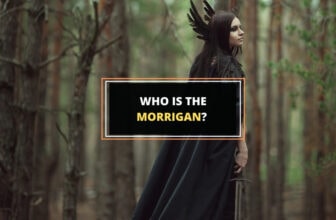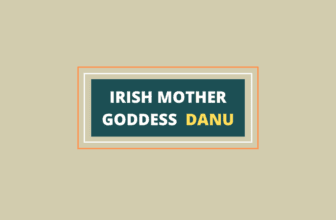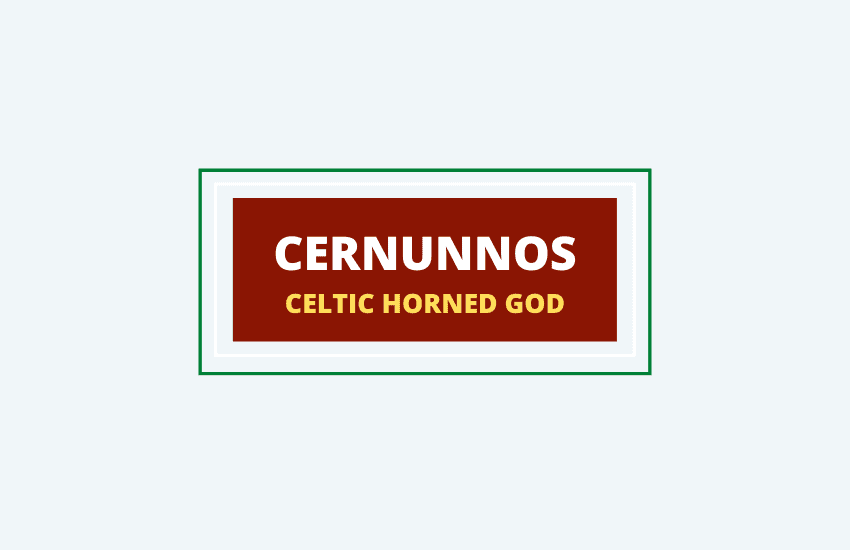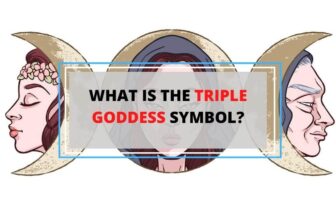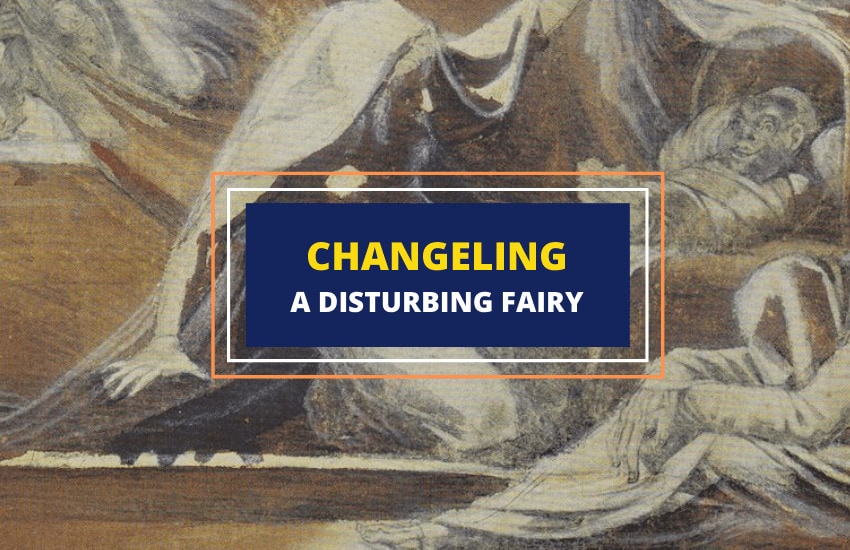
Table of Contents
Not all Irish fairies are beautiful and mysterious women who dance in the woods or sing songs under the sea. Some fairies are mischievous or outright evil while others seem to exist just to mess with the poor people of Ireland.
One such example is the changeling, an ugly and often physically deformed fairy that’s placed in the beds of kidnapped human children.
What is the Irish Changeling?
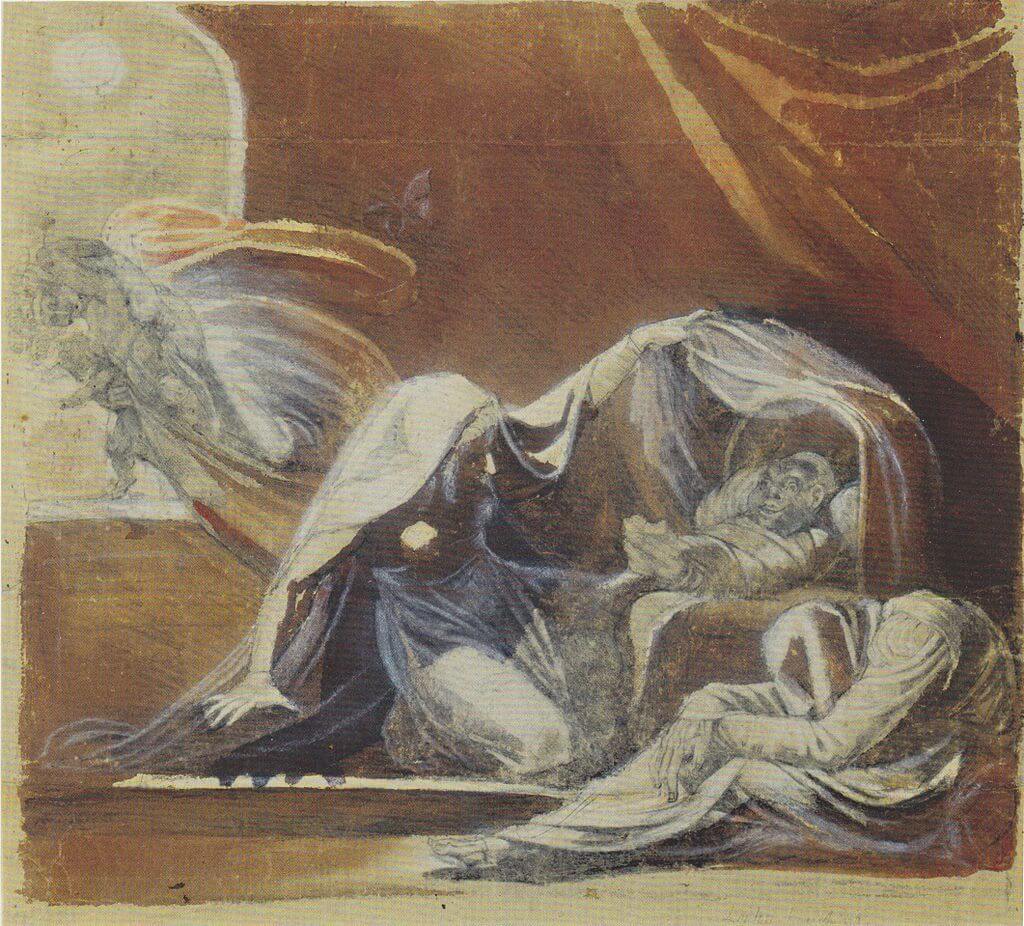
The Irish changeling is one of the few Irish fairies that has a name that’s clear and simple to understand in English. Typically described as fairy children, the changelings are placed by other fairies in the beds of abducted human children.
Sometimes, the changeling placed in the child’s place would be an adult and not a child. In both cases, however, the changeling would mimick the child’s appearance and would look indistinguishable from a human. However, later on, the changeling inevitably starts exhibiting some physical or mental deformities believed to be the result of the changeling struggling to imitate the human form.
Why Would Fairies Swap A Human Baby With A Changeling?
There can be many reasons why a human baby or a child would be replaced with a changeling. In fact, sometimes a certain fairy would take a child without even leaving a changeling in its place, although this is rare. Here are some of the more common reasons:
- Some fairies are said to love human children and sometimes have the urge of taking one for themselves, so they could take care of the child and watch it grow. Such children would be raised as fairies and would live out their lives in the Faerie realm.
- Other stories claim that fairies love taking handsome young men as lovers or healthy boys who’d become their lovers when they mature. The fairies presumably did that not only because they liked human males but also because they wanted to strengthen their own bloodlines.
- Many times a child would be swapped with a changeling as a prank. Some fairies, like the Dar Farrig, would do this out of pure mischievousness and for no other reason.
- Often a changeling would be placed in a child’s stead not so much because other fairies wanted a human child but because an older fairy changeling wanted to spend the rest of its life in the care of a human family.
- Another reason the swap is sometimes made is that the fairies have observed the human family and have concluded that a child is not well taken care of. Because of this, they’d take the child to give it a better life and give the family an old and mischievous changeling in its stead.
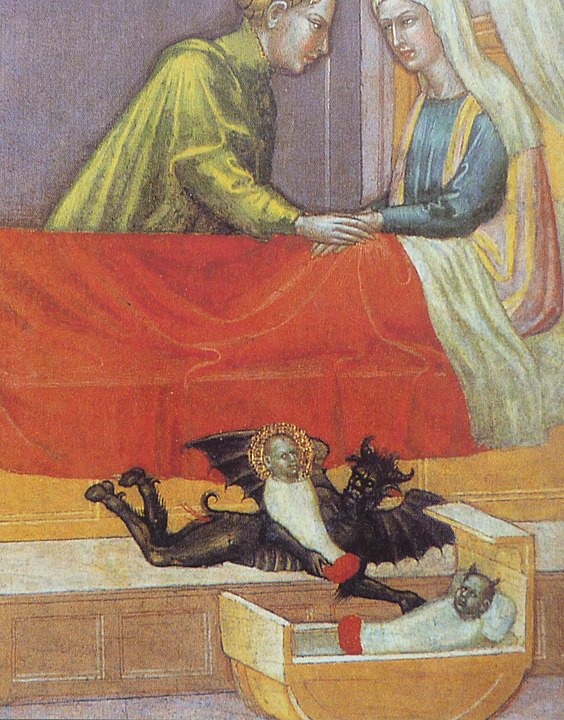
What Happens When the Changeling Grows Up?
Most of the time, the changeling would grow up just as a human would. The fairy would go through the standard human stages of growth – prepubescence, puberty, adulthood, and so on.
Because the fairy is not an actual human and is only mimicking a person, it would usually grow ugly and deformed, either physically, mentally, or both. As such, the changeling rarely becomes a particularly well-adjusted member of society, so to speak. Instead, it’d have trouble learning how to do things and it wouldn’t fit in. When a changeling is allowed to grow into an adult human, it’s usually called “an oaf”.
It’s also said that changelings typically bring great misfortune to the homes they are placed in. The one redeeming quality of changelings seems to be that they grow up with a love and affinity for music.
Does The Changeling Ever Return To Its Faerie Realm?
The changeling doesn’t return to its Faerie realm – it stays in our world and lives here until its death.
However, in some tales, the abducted child does return years later.
Sometimes it’s because the fairies have let them go or because the child has escaped. In either case, quite a lot of time passes before that happens, and the child returns grown up and changed. Sometimes their family or townsmen would recognize them but, more often than not, they would think they are just a stranger.
How To Recognize A Changeling
The changeling is able to fully imitate the appearance of the child it has replaced. It just starts to exhibit some physical or mental deformities at a certain point. These can be random and, of course, coincide with various natural disabilities modern medicine now knows of.
At the time, however, all these disabilities were viewed as the signs of a changeling.
Can A Family Return A Changeling To The Faerie Realm?
Trying to return a changeling is usually viewed as a bad idea. The fairy folk are very secretive. It’s not possible for common folk to simply find their barrows, break in, and replace their child with the changeling again.
Additionally, fairies are often vengeful and it’s believed that if they see that the changeling is being mistreated, they’d mirror that poor treatment onto the child they’ve abducted. It’s also often said that the bad luck that befalls the family with the changeling is actually done to them by other fairies as revenge for mistreating the changeling.
So, what can a family do to return the changeling or have a hope of seeing their own child again? Realistically – not much, but there are a few things a family could attempt:
- Treat the changeling as a demon and try to exorcise it. This has actually been done in some parts of Ireland. In those cases, the changeling is viewed not as a separate being, but as a fairy that has possessed the family’s child, similar to a Christian demon. The attempts of “exorcism” would usually include beatings and torture. Needless to say, these attempts were as grim as they were pointless.
- A less horrific solution is to look for the barrows of the fairies that have taken your child and given you a changeling. This is typically viewed as a hopeless attempt as fairy barrows are impossible to find. Still, most fairies are said to leave their homes and travel around at least once or twice a year, so it’s hypothetically possible that a family would find the Faery realm and replace the changeling for their child again.
- The one way to return a changeling that is viewed as semi-plausible is to just try and be kind to the changeling and raise it as your own child. Fairy changelings were typically weak and disabled so they needed extra care but if such care was given, they could grow up happy and somewhat healthy. If that was the case, the changeling’s natural fairy parents could sometimes decide that they wanted their child back and do the switch themselves. In those cases, the people would just find their own child miraculously returned to them one day and the changeling would be gone.
Can The Changeling Ever Replace A Full-Grown Adult?
Most tales include the replacement of children and babies with changelings but there are some equally disturbing stories about adults being replaced with changelings.
A real-life incident that happened is that of the 26-years-old Bridget Cleary, wife of Michael Cleary. The two lived at the end of the 19th century and had been married for about 10 years.
Bridget was childless, however, and didn’t seem capable of bearing Michael’s children. She was also a somewhat peculiar woman, at least from the point of view of those around the family. Her “sins” were that she enjoyed long walks around the nearby “Fairy Forts”, that she was a quiet and polite woman, and that she enjoyed her own company.
One day, in 1895, Bridget fell ill during a particularly unforgiving winter storm. Her husband tried to fetch the town doctor, but the doctor couldn’t come for at least a week. So, Michael had to watch his wife’s condition deteriorate for days. It’s said that he tried various herbal medicaments but none of them worked.
Eventually, Michael became convinced that his wife had been abducted by fairies on one of her walks and that the woman in front of him was actually a changeling. Together with a few of his neighbors, Michael tried to cast the changeling out in a rather extreme way, not dissimilar to how a priest would try to exorcise a demon.
After several days when the doctor finally arrived, he found Bridget Cleary’s burned body buried in a shallow grave.
This real-life story has been immortalized in the famous Irish nursery rhyme Are you a witch or are you a fairy? Are you the wife of Michael Cleary? Bridget Cleary is often considered to be ‘the last witch burned in Ireland’, but modern accounts speculate that she had probably caught pneumonia or may have had tuberculosis.
Are Changelings Evil?
For all their bad reputation, changelings can hardly be called “evil”. They don’t do anything malicious, and they don’t actively harm their foster families in any way.
In fact, most of the time it’s not even their fault that they have been placed in a child’s place as other fairies usually do the exchange.
Changelings do cause misfortune to the household they’re placed in and they are a burden to the parents, but that seems to just be the nature of things and not an act of mischief on the changeling’s part.
Symbols and Symbolism of the Changeling
The stories of changelings may be fascinating but the obvious truth behind them is horrifying. It’s clear that the story of changelings was often used to explain mental or physical disabilities of children.
As people simply didn’t have the medical and scientific knowledge to understand why or how their child would develop seemingly random disabilities and deformities, they attributed it to the world of fairies.
In an attempt to cope with the situation, people would often convince themselves that the child in front of them simply wasn’t their child. To them, it was a mysterious creature, sitting there in the child’s place due to the maliciousness of some mysterious force.
Naturally, the changeling myth resulted in a horrifying and incalculable number of children who were abandoned, tortured, or even killed.
This isn’t unique to Irish mythology. Many cultures have myths that attempt to explain why someone is behaving in a different way. Japanese mythology, for example, is full of shapeshifting yokai spirits, Christians believed in demon possession and Buddhists blamed it on the bad karma of the person. Regardless of the culture or mythology, there has always been an external explanation for disabilities. The result, however, has been the same – the mistreatment of people who are different.
Importance of the Changeling in Modern Culture
The changeling myth has influenced not only the behavior and culture of people in the past, but also modern art and culture. Many recent novels, stories, and even movies, TV shows, or video games feature Irish changelings or characters that are clearly inspired by them.
Some of the more famous examples include Roger Zelazny’s 1981 Changeling, Eloise McGraw’s 1997 The Moorchild, and Tad William’s 2003The War of the Flowers.
Some older literary classics to also include changelings include Gone with The Wind where Scarlett O’Hara is believed to be a changeling by some of the other characters. There’s also W. B. Yeats’ 1889 poem The Stolen Child, H. P. Lovecraft’s 1927 Pickman’s Model, and of course – Shakespeare’s A Midsummer Night’s Dream.
In the realm of comics and video games, there’s Hellboy: The Corpse, the Tomb Raider Chronicles (2000), the Magic: The Gathering collectable card game, and many others.
Wrapping Up
The changeling myth is dark and disturbing. Its real-world inspiration is clear, as it apparently originated as a way to explain why certain children behaved in a way that was not considered ‘normal’. As one of the creatures of Celtic mythology, the changeling remains a unique and disturbing creation.




